The cemetery was built in 1804 as the city ran out of room for new graves within its limits. It was named after Louis XIV’s confessor, Père François de la Chaise (1624–1709), who lived in a house near the cemetery land.
At the time, the locals considered the cemetery too far from the city. Père Lachaise only had 13 graves its first year. However, administrators devised a plan and, with great fanfare, transferred the remains of Jean de La Fontaine (fabulist) and Molière (playwright), two of Paris’s most famous artists, to Père Lachaise.
At the time, the locals considered the cemetery too far from the city. Père Lachaise only had 13 graves its first year. However, administrators devised a plan and, with great fanfare, transferred the remains of Jean de La Fontaine (fabulist) and Molière (playwright), two of Paris’s most famous artists, to Père Lachaise.
The strategy worked, and people clamored to be interred with the cemetery’s famous new residents. Today, there are over a million people buried here, and it’s still an active cemetery, though to be buried here, you have to have lived or died in Paris.
Waking up on a bright beautiful day, we went to the cemetery to marvel at the graves, mausoleums, and sepulchres of the dead. While a rainy day may have been more à propos, I welcomed the sun (I lacked an umbrella).
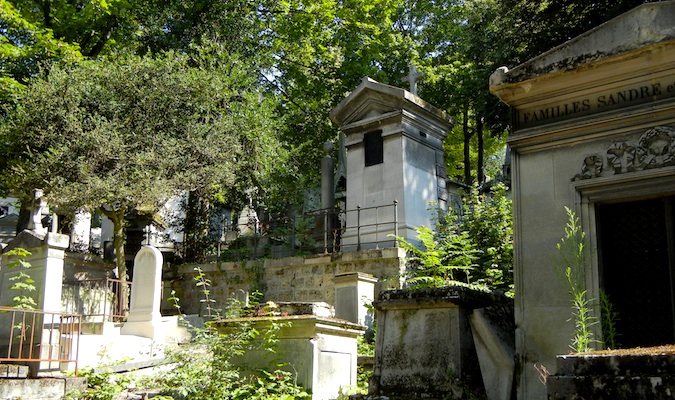
Humans have always had a fascination with death — we’ve been writing, singing, and pondering about it for ages. We dedicate much of our lives to thinking about that eternal question “What comes next?” So it doesn’t surprise me that cemeteries become tourist attractions.
To me, walking among the dead is both uncomfortable and interesting at the same time.
I tend to feel uncomfortable because I think, “Here we are, gawking at the graves of the dead like they’re some museum exhibit to be ogled.” The dead become a sideshow as people exclaim, “Hey look, I have a picture of Jim Morrison’s grave! Yay!” Maybe it’s because we want to get close to the famous people we could never get close to in life. I don’t know, but whatever the reason, as I snap a dozen photos of Édith Piaf’s grave, I know I’m guilty of it, too.
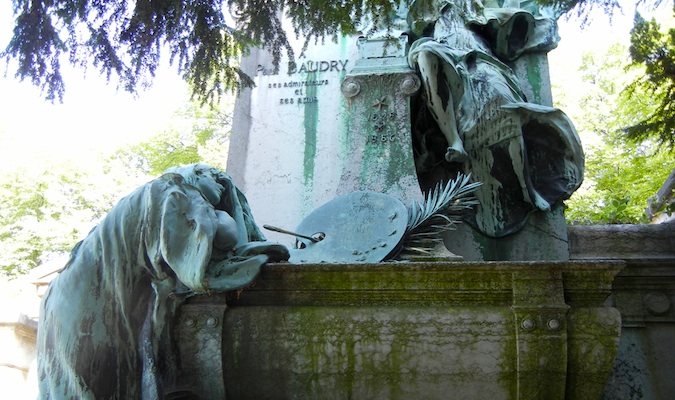
But more than being uncomfortable, I’m always interested in the people around me. Who were they? What lives did they lead? Were they happy? Sad? Were they loved, lost souls, artists, hypochondriacs? I like to imagine them going through the ups and downs of life we all face or being witnesses to a historical event we now dissect in history books.
It’s easy to get lost among the giant crypts and trees. Covering 110 acres, the cemetery rises along a hill, with the older center a mishmash of winding streets and long-worn-out names and the newer tombs laid out in perfect city blocks. The moss-covered tombs and tree-lined cobblestone streets hide the sounds of the city. All that remains are your footsteps and the squawks from crows who remind you that on this day of life, death is all around.
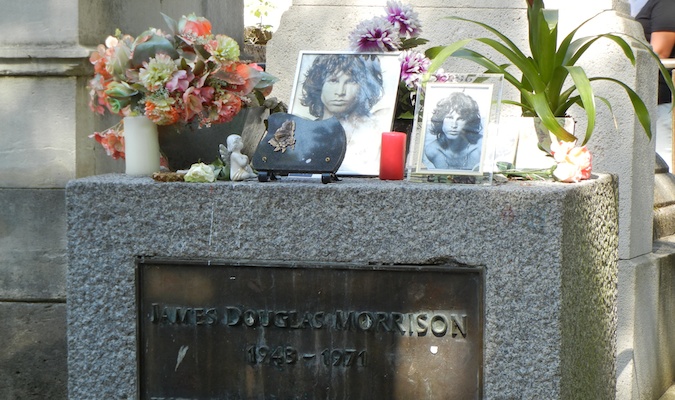
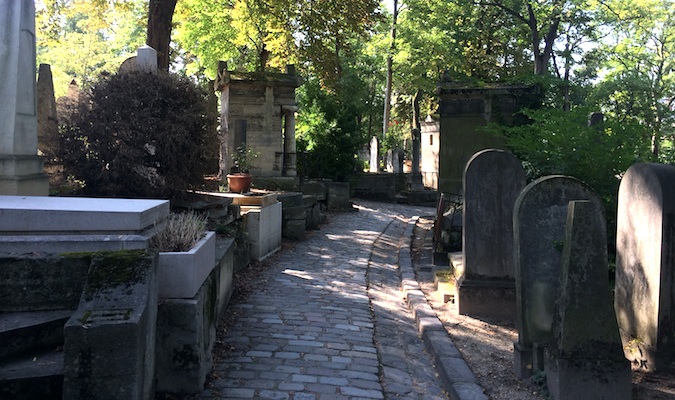
Most visitors are drawn to the cemetery by the famous people buried here: Édith Piaf, Jim Morrison, Oscar Wilde, Honoré de Balzac, Molière, Chopin, Max Ernst, and others. They make a break for these graves while leaving the rest of the dead (and living) undisturbed.

I wandered through the graves, struck by the silence and the enormity of the tombs. Many of the mausoleums seem fit for kings and are spectacularly decorated with statues, art, and sculptures depicting angels and scenes of mourning. These people wanted to be remembered. As I wandered around, I found a contrast to the tombs of the celebrities, who seemed to want the opposite. Celebrity graves were often the simplest, as if they no longer wanted in death the spotlight they had in life.
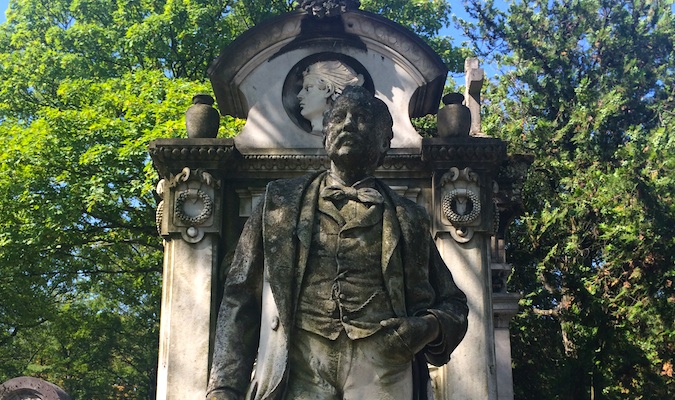
We spent hours visiting the cemetery, often sitting in silence, reflecting on those buried around me. Visiting the graves of so many people that I admire made me feel oddly connected to them. I paid my respects and thanked them for the influence they’ve had in my life. I only hope I’ll accomplish half of what they did in their lives.
Directions: The best way to get here is to take the no. 2 or no. 3 metro line and get off at the “Père-Lachaise” stop.
